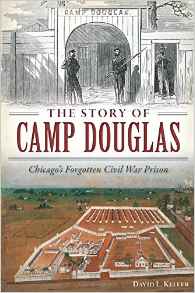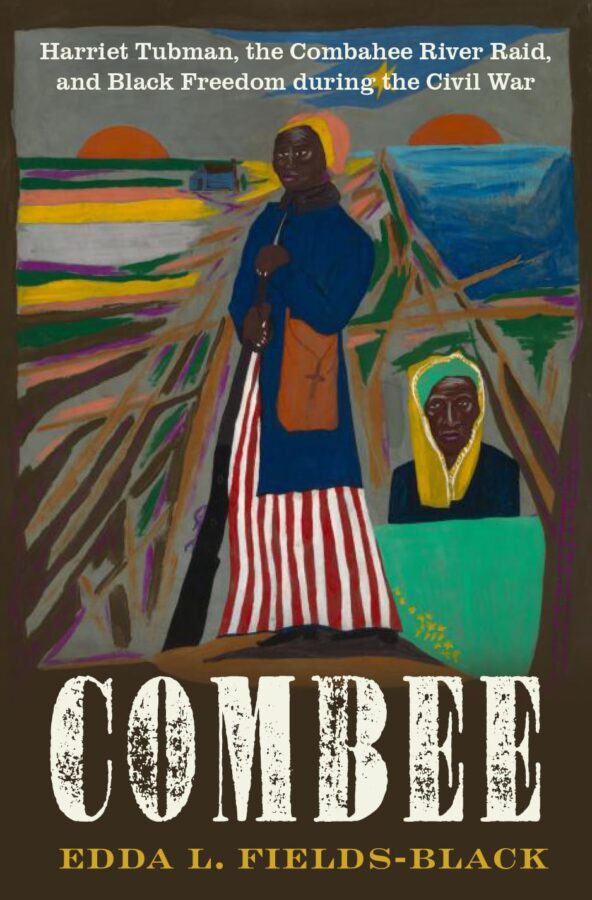The Story of Camp Douglas: Chicago’s Forgotten Civil War Prison by David L. Keller. The History Press, 2015. ISBN: 978-1-62619-911-8. $21.99.
 In his introduction to the 2011 edition of Ovid Futch’s History of Andersonville Prison, Michael Gray assesses the historiography of American Civil War prison camps and asserts that additional studies are needed if we hope to understand their larger significance. Answering this call, David Keller presents The Story of Camp Douglas, a micro-study that tracks the camp from its creation as Union barracks to its eventual notoriety as the “Andersonville of the North” (10). Building on recent works by Robert Doyle, James Gillispie, Roger Pickenpaugh, Charles Sanders, and Michael Gray, Keller not only attempts to narrate the full story of Camp Douglas, but also to provide a fairer assessment of the North’s deadliest Civil War prison.
In his introduction to the 2011 edition of Ovid Futch’s History of Andersonville Prison, Michael Gray assesses the historiography of American Civil War prison camps and asserts that additional studies are needed if we hope to understand their larger significance. Answering this call, David Keller presents The Story of Camp Douglas, a micro-study that tracks the camp from its creation as Union barracks to its eventual notoriety as the “Andersonville of the North” (10). Building on recent works by Robert Doyle, James Gillispie, Roger Pickenpaugh, Charles Sanders, and Michael Gray, Keller not only attempts to narrate the full story of Camp Douglas, but also to provide a fairer assessment of the North’s deadliest Civil War prison.
Keller’s primary concern is some historians’ assertions that the treatment of POWs worsened as the Civil War persisted and the camps deteriorated. By tracing Camp Douglas from its construction to its closing in March 1866, Keller demonstrates that repairs and modifications were much more common than previously thought. Union administrators repeatedly ordered improvements, repairs, and enhancements during the camp’s existence. For example, after its first winter as a POW camp, Union administrators erected buildings to protect prisoners from the cold ground. Furthermore, these administrators ordered the construction of new barracks and repairs to existing structures throughout 1864 (41). While these improvements might not have been as timely as some had desired or as extensive as Camp Douglas needed, for Keller, they were improvements nonetheless. Keller highlights these enhancements to reject any claims that the camp’s high death rate resulted from Union inactivity or maliciousness; he instead argues that common nineteenth-century troubles—primitive medical care, sanitation, and disease—were to blame.
Building on this assessment, Keller then shifts to his second argument: that Camp Douglas was unlike the Confederacy’s notorious Andersonville Prison in Georgia (215). Keller clarifies that while Camp Douglas’ death rate of 23% may seem comparable to Andersonville’s 29%, historians must also compare the length of time each prison camp operated. Andersonville existed for only fourteen months, while Camp Douglas became a permanent POW camp in January 1863 and closed in May 1865—housing inmates for a total of 29 months. Keller adds that Camp Douglas was neither worse nor better than any other Union camps, as they were all “unsanitary, ill-prepared, poorly managed, and overcrowded facilities of despair” (213).
The book relies on soldiers and guards’ wartime writings, military correspondence, Sanitary Commission reports, and archeological evidence discovered during the recent excavation of the site by the Camp Douglas Restoration Foundation. Lengthy excerpts from prisoners’ letters and diaries provide glimpses into prison life, while official reports from Union Army officers and government administrators shed light on the struggles of maintaining a prison camp as the number of Confederate prisoners increased dramatically in late 1863. By focusing on wartime writings, Keller demonstrates that the combination of lack of experience in managing and securing POWs, prisoners’ poor health, and primitive medical care resulted in the camp’s high death toll.
While Keller’s main historiographical contribution is his reassessment of Camp Douglas’s reputation as “Andersonville of the North,” his work also offers insight into Chicago’s importance during the war. Using archeological evidence, Keller not only locates the mysterious western boundary of the camp, but likewise illustrates how the camp’s location benefitted the city. The Civil War was a defining event for Chicago and its citizens: “Social restructuring, economic development, and Chicago’s role in the conduct of the war were but a few factors that shaped the city” (21).
Keller’s book would be a great addition to an introductory college-level local history course on Illinois or Chicago history—or an introductory Civil War course—because of its discussion of postwar memory, community building, disease, and the nineteenth-century notion (elucidated by Drew Gilpin Faust and others) of a “good death.” Nonetheless, the work could have benefitted from more diverse primary sources and further discussion of Camp Douglas’ place in American memory. Reliance on a greater number of POW writings could potentially offset Keller’s insistence that the camp’s high death rate was not a result of Union cruelty and shed additional light on camp life, relationships between the prisoners and their guards, and postwar memories. Moreover, further analysis of the “Andersonville of the North” myth as a Lost Cause creation would provide helpful qualitative evidence to his quantitative information. Nevertheless, Keller’s use of historical and archaeological evidence provides a useful base upon which future historians of Civil War POW camps can build.
Angela Riotto, who is working on a Ph.D. in the Department of History at the University of Akron, studies Civil War prisoners of war.
